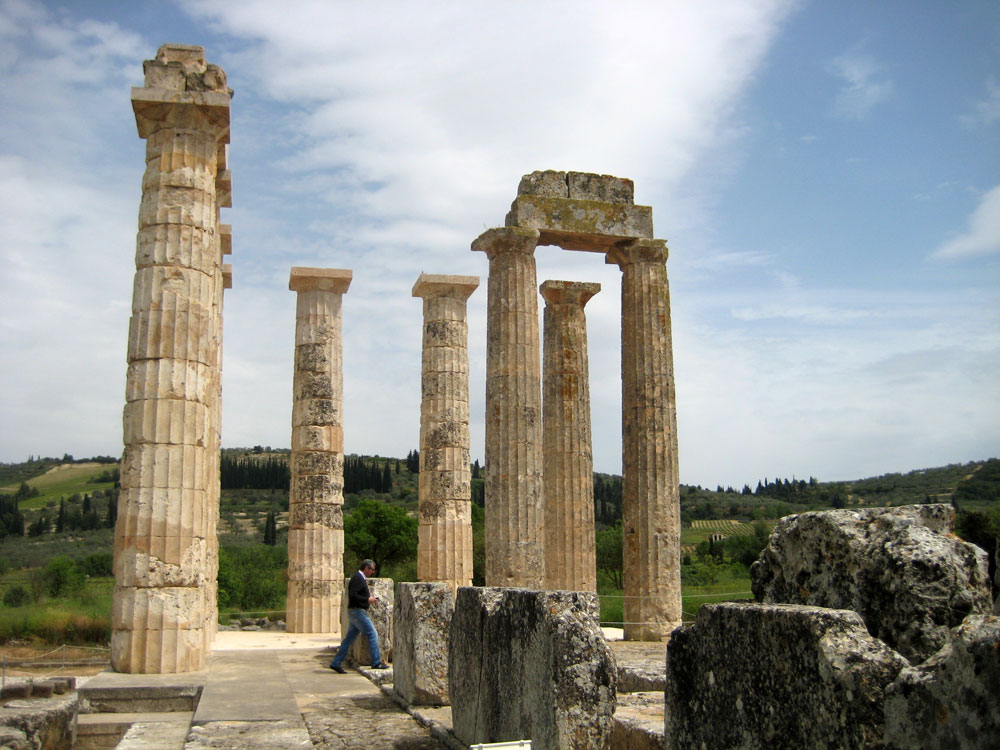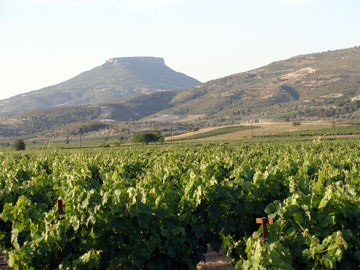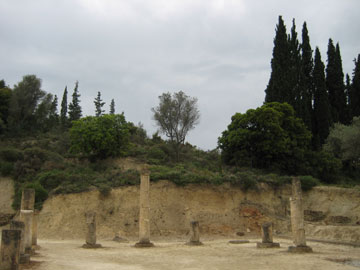About Nemea
Nemea is an ancient place. It is the site of a famed sanctuary of Zeus erected around 330 BC atop an even older temple complex. It was the site of important games in the ancient Hellenic world which took place in the recently excavated stadion. The first of Heracles’ labors took place here — his battle with the ferocious Nemean lion. Nemea is at the heart of a region which was amongst the first to cultivate grapes for wine production in what is now modern Europe. The region was noted for its winemaking by Homer who called it Ampeloessa — “full of vines”.
This ancient place is still full of vines today, and is widely regarded as the source of some of modern Greece’s best wines. Located in the northeastern part of the Peloponnese, roughly 30 kilometers from Corinth, Nemea is most known as the designated appellation for the deep red Agiorgitiko or St. George grape. These vines are said to have sprung forth from drops of blood shed during Heracles’ epic battle with the lion. The Agiorgitiko grape is used to make not only a full bodied velvety red wine, but also a robust rose that locals especially enjoy during the winter and with grilled meats. Nemean winemakers have never limited themselves and have long grown other indigenous varietals such as Roditis which produces a crisp and refreshing white wine well suited to the heat of the summer.
In modern times, Nemean winemakers first organized themselves into a cooperative in the 1930s. For much of the twentieth century, wine that was not consumed locally was sold to negociants not only in Greece but also in France and Italy who were in search of high quality wine. By the 1980s, an increasing number of small producers and boutique wineries moved to the fore. Some had been growing grapes and producing wines for generations in Nemea while others were newcomers to the area drawn by the superior terroir.
Nemea enjoys a rather typical Mediterranean climate of mild winters, short springs, warm to hot summers and long autumns. The vines, planted in Nemea’s famed red soil, are cooled during the heat of the summer by the bay breeze from the Gulf of Corinth. The region is divided into three distinct altitude zones providing a multitude of microclimates. The valley at 250 to 450 meters above sea level is the hottest. The middle zone at 450 to 650 meters is set amongst rolling hills while the cooler upper zone extends as high as 900 meters. Varying soil types, slope angles and orientations and most especially the differences in vineyard altitude give the opportunity for winemakers to craft a wide range of expressions of the Agiorgitiko and other native Greek varietals.
The Nemea of today is celebrated not only for its connections to the ancient world but for its modern crop of winemakers and wineries.




